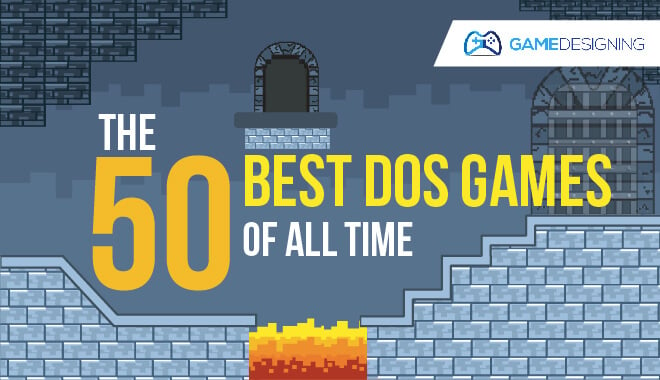
DOS was the original operating system for early Windows-based systems. DOS stands for Disk Operating System but was replaced once Windows XP launched.
DOS games were those developed under this operating system.
While some of the best DOS games can bring you back to wonderful memories of your younger years, they also laid the foundation for what we see in the gaming world today.
Compared to today’s video games, even the best DOS games of all time may appear rudimentary and basic, but many of them are still a lot of fun to play.
Yes, you can still play a number of these best MS-DOS games today -usually through a browser like Google Chrome or Mozilla Firefox.
What Makes A Good DOS Game?
Debuting in 1981, MS-DOS games accounted for literally thousands of games through the 1980s and into the 90s.
A ‘good’ DOS game is truly in the eye of the beholder, so don’t get upset, angry, or start sending hate mail because your list is different than ours.
Did the game perform well for what it was?
Was the game fun (to the point that people played it for years, sought the original disks for resale, and want to still play today with a DOS emulator framework)? Games that aren’t fun don’t last long, but everyone’s definition is different.
Were the fundamentals of most successful games throughout history in place with these best DOS games of all time?
At the end of the day, it comes down to personal preference, but we did rely on a range of opinions when selecting the best DOS games of all time.
Our Ranking Criteria
In addition to player and critic ratings, we use objective metrics like sales, users, and sales growth rate to make our lists (read more). Some of these data sources include:
Best DOS Games
Risk
If you’re familiar with the board game, then you already know what to expect from the DOS game Risk. The goal is for players to dominate the world by attacking other countries and taking over them.
Build armies, move troops strategically around to fortify positions in an attempt to strengthen your position, and attack and defend.
SimCity 2000
This version marked a considerable shift from the original SimCity games. The views changed, providing depth of the land and underground was added so players needed to consider laying pipes, subways, and other real underground structures.
Why We Like It
This unassuming game thrives on even the most modest of computers. While it may not boast the visual splendor of modern games, it fills the void for city-building enthusiasts seeking a wallet-friendly alternative.
Its pixelated charm invites you into a world where dated graphics are no barrier to enjoyment.
Its widespread availability across multiple platforms, from IOS to SNES, Saturn, and Playstation, makes it a versatile classic. It’s akin to a 3D rendition of SimCity, serving as a heartfelt recommendation for aficionados of retro-gaming.
This game is a testament to timeless gameplay and an enduring source of joy for those willing to embrace its pixelated allure.
Worms
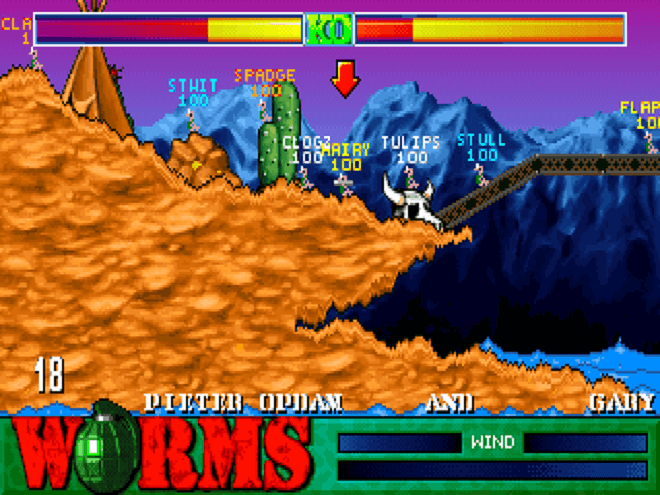
This tactical two-dimensional game is all about strategy. You can play up to four teams, each with up to four worms. The goal? Destroy your opponents’ worms before they do it to you. Worms are turn-based, so you need to determine who you’ll attack next. Or what moves make the most sense at that stage in the game.
Wolfenstein 3D
This first-person shooter game is based on episodes, meaning you’ll need to move through the story, accomplishing goals in order to reach the next level. As B.J. Blazkowicz, an allied spy, your job is to successfully navigate six full episodes and win the day!
Mario Teaches Typing
A great way to learn and improve typing skills. In Mario Teaches Typing, there are four games to choose from, each one building on the previous one with regard to difficulty levels. Players can choose to be Mario, Luigi, or even the Princess. Type the letters or words moving across the screen and players can perform different actions to accomplish goals.
WarCraft II: Tides of Darkness
An upgrade to WarCraft, Tides of Darkness provided a number of advanced features, including fighting over sea and air (not just on land). Multiplayer mode accommodated up to eight players at once and also allowed players to choose between separate orc and human campaigns.
Doom
No list of the best DOS games could possibly be complete without Doom. Scientists experimenting with teleportation technology out on Mars’ moons inadvertently open a gateway to hell. As the last surviving marine sent to stop the demons, players must fight to keep them from destroying everything.
Sid Meier’s Civilization
Choose between a randomly generated world or focus on the real world. Either way, players build civilizations from the very beginning (from the ground up, literally). Beginning with the earliest civilizations all the way to space flights, this legendary game started it all.
Sid Meier’s Civilization II
Released in 1996, this is often considered one of the best games of all time. The purpose for players is to create a civilization that will survive through the ages.
It’s not enough to remain docile or neutral, but to expand, conquer, and grow the culture, influencing others along the way. The goal is to either conquer every other nation or figure out how to colonize an entirely different world.
Heroes of Might and Magic 2
For those who know about Heroes I, this is essentially the sequel. This fantasy-based game is set in Enroth, where magic rules. With six different castle types and six creature forms in each castle, there’s always a challenge for players to use their magic to overcome.
Panzer General
Taking turns, this military-style game allows players to revisit some historic battles and wars. Controversy surrounded Panzer General as it was the first video game that allowed people to play as Nazis.
Oregon Trail

Considered by many to be the most successful educational game in history, players essentially follow the Oregon Trail as many adventures and desperate families did while seeking a new life along the West Coast of the 19th century.
SimTower
Build and manage the various operations of a modern skyscraper. Players need to plan things out properly, understand where facilities within the tower should be built, and how best to lay everything out for functionality and satisfaction.
Snood
This puzzle game provides grids of small shapes of different colors. Each one has a face on it and blocks are placed at the bottom of the screen that players need to manipulate, turn around, and match up with those colored shapes.
Warcraft II: Beyond the Dark
Following what happened in Warcraft II: Tides of Darkness, this version of the game picks up. There’s a new invasion of Azeroth and the Alliance needs to determine the right strategy to reclaim victory. There are 12 map campaigns and five new hero characters available for either side.
Grand Theft Auto
This first version of the game that revolutionized the concept of doing whatever you’d like within a video game set the bar. It was a high bar, even at the time this DOS game was released. Players take on the role of a small-time criminal trying to make a big impression with organized crime.
Sid Meier’s Colonization
This strategy game is slightly different than Civilization. Instead of building a civilization from the ground up, players seek to conquer the New World. You are the King and must establish new colonies and protect them from growing threats in this new world. Set in the time of the discovery of the Americas, this game combines strategy with some historical references.
Theme Hospital
If you’ve ever wanted to get into healthcare or run your own hospital, Theme Hospital was a must-have game that provided some context of how things really run, from getting the right equipment like x-ray machines to the desks and cabinets used for storing medication, bandages, and other supplies.
Doom II: Hell on Earth
For players who fought in Doom and survived, there is a new plan in place. Build large spaceships to take the remaining survivors deep into space. However, when the demons take over the only spaceport, the battle really begins.
Prince of Persia
Defeat the wicked tyrant sultan and rescue the princess. It’s pretty simple and straightforward for this addicting game.
Command & Conquer: Red Alert
The entire franchise that was built through Command & Conquer is all about the old Soviet Union invading the United States. Gameplay for this version is built on the previous one, with new environments and missions.
Lemmings
Lemmings are notorious for getting into groups and rushing forward, even if that means heading off a cliff. In this game, players need to rescue lemmings over 120 levels.
Oregon Trail II
This version improved on the original, even though it adheres to the same basic structure. With adventures and educational material, this game has long been a staple of some families’ Friday night fun.
Warcraft: Orcs & Humans
Players have the option to either be the humans or the orcs in this strategy game. Depending on which one a player chooses, the story arc can go in one of two ways. Using swords and sorcery, all of the best features of classic fantasy are rich in this game version.
SimCity
This was the original, the one that started an entire franchise. The idea is for players to build, develop, and manage a city through a wide range of scenarios, from relatively simple and straightforward to increasingly difficult. Keep up with earthquakes, floods, and fires and be the leader people want to follow.
Stratego
Another video game that was based on a popular board game, Stratego essentially requires players to Capture the Flag of their opponent. Begin with 40 pieces, comprising a variety of military units, and defend your flag while trying to capture your enemy’s flag at the same time.
Duke Nukem 3D
In a futuristic Los Angeles, aliens have landed, but the pivotal character Duke is bent on making them pay for their invasion. With pistols, laser trip mines, bombs, and other paraphernalia, there is a high level of interactivity with this game and many things surrounding our titular character can explode.
Fallout
This role-playing game was originally critically acclaimed. While there is certainly a sense of humor throughout gameplay, the premise is that a nuclear war nearly wiped out all life on earth. A fragment of humans survived where they must scavenge and learn to restart civilization relying on underground dwellings, water purification systems, and other necessities.
The Ultimate Doom
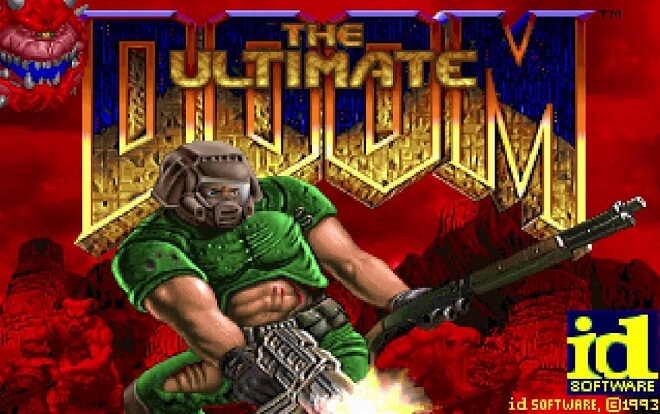
Focusing on improving the original Doom, the Ultimate Doom picks up with demons continuing to ravage the world, and the fight to save the human race continues on. This was another stop in an ongoing saga of games based on the Doom universe.
Heroes of Might and Magic
This turn-based strategy game sees players having to accept the role of one of four heroes. They can either be the warlock, the sorceress, the barbarian, or the knight. Build up your castle, strengthen your army, and defeat the enemy in battle. That’s all there is to it, but when talking about strategy games, there’s a lot more planning that goes into victory.
Master of Orion II: Battle at Antares
This sequel sees players taking on the role of a ruler over one of 13 races. Using a turn-based grid system engaged in combat, and as new systems can be explored, odd artifacts might be found in certain events that can be triggered, so you never know what’s coming next.
Lords of the Realm II
One of the more unique medieval strategy games, Lords of the Realm II, doesn’t rely on magic. There’s also no growth in technology. As a player, the goal is to essentially manage and grow food, expand the population, and focus on keeping people happy, oh, and keeping other groups from invading.
The Need for Speed
Players get the opportunity to experiment with some amazing sports cars through a series of wicked tracks. Some of these tracks are open roads, meaning you will be cruising right down an oversized highway, most likely with police quickly in pursuit. One of the better options is that it allows players to choose the time of day they are racing.
Family Feud
Modeled after the incredibly successful television game show that originally aired in 1970, this one was actually the first Family Feud computer game that was based on the original television game show. Two families compete against each other for points and then a big cash prize.
Settlers of Catan
The object of this game is to be the first player who achieves a specific count of victory points while it’s your turn.
Sensible World of Soccer
Originally released in 1994, this game has players competing internationally in either clubs or national-based teams. There is also a career mode for an added level of excitement.
Zork I: The Great Underground Empire
Players enter into an incredibly vague role in the game. They are essentially an adventure. Players are given very little in the way of instruction, but by the time you enter this white house, interesting objects can be explored, and soon it becomes clear what the purpose of it all is.
Mario’s Game Gallery
This game is actually a collection of games that were designed specifically for PCs. Players can choose between Checkers, Dominoes, Backgammon, Go Fish, and Yacht. In this, though, the only person a player gets to play against is Mario.
The Secret of Monkey Island
This humorous adventure game takes place in the Caribbean when pirates ruled the sea. Players get to be a young man who has always wanted to be a pirate and who begins exploring a variety of make-believe islands. Solving puzzles is part of what makes this came intriguing.
Mortal Kombat
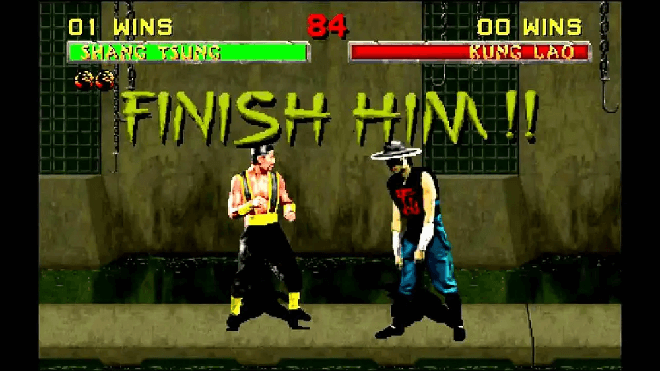
Mortal Kombat has been around for years, including a series of movies based on the original video game. This was the original. Taking place about 500 years ago, the best artisans of hand-to-hand combat competed in one of the most respected tournaments that were only held once every 50 years.
You Should Know
There was some controversy surrounding the release of the DOS version of Mortal Kombat. The game was originally released with the same blood and gore effects as the arcade version, but this caused some concerns among parents and religious groups.
As a result, Acclaim Entertainment released a censored version of the game that removed the blood and gore effects. In the censored version, the blood and gore effects were replaced with a white mist. This was done to make the game more family-friendly.
However, this did not completely satisfy the critics, and the game continued to be a source of controversy.
Command & Conquer
This strategy-based game was actually designed following Dune, and the only real focus is the war raging over Tiberium, the only material anyone cares about. You can choose between 15 different missions. Units can be created from the main mineral.
The Settlers
A real-time strategy game, The Settlers has the primary goal for players to establish a settlement, complete with a working economy and building out military units with the long-range goal of conquering rivals in other territories.
The Settlers II Gold Edition
Building upon the original The Settlers, this one has players facing a new challenge of 49 different maps to create new worlds complete with thick forests and mighty volcanoes.
Heroes of Might and Magic II: The Price of Loyalty
Expanding on the success of Heroes of Might and Magic, this version presented new campaigns as well as a host of enhancements. There are new heroes, new artifacts, and new places to explore. Players also enjoy 24 new campaign maps they can follow in pursuit of conquest.
Master of Orion
This turn-based science-fiction strategy game was originally released in 1993. It provided players the option of choosing 10 different races of creatures to play, each with certain advantages, such as in trade and diplomacy or ground combat.
The Lion King
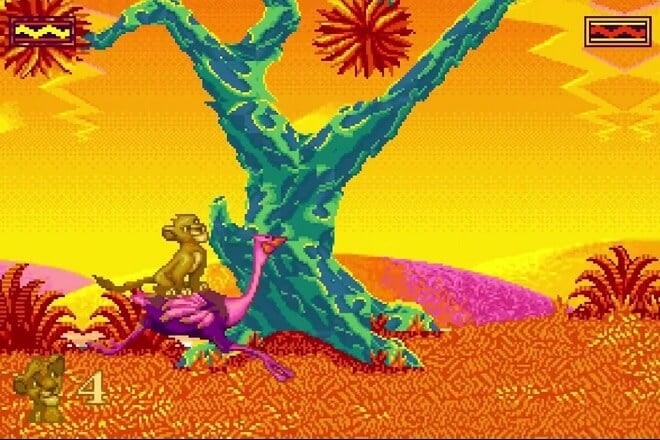
Based on the incredibly popular Disney movie of the same name, in this video game, players are the young Simba who have to brave confrontations with a variety of beasts. Roar to bring certain animals into submission. But beware, if your “roar meter” is too low, you won’t bring anybody to submit.
Z: The Game
Perhaps the video game with the shortest possible title is an action strategy game that is presented from a bird’s eye perspective. Robot armies are fighting against each other. As a single-player game, you would control one side. The computer would control the other. The goal is to occupy their territory.
Jones in the Fast Lane
Built around the premise of a board game, this could be played by up to four players who live out one week at a time, each taking a turn. However, if only one person is playing, they get to play against the namesake, ‘Jones.’ The goal is to simulate a person’s life.
Scorched Earth
This artillery video game was incredibly popular when it was first released. It’s an all-out war and players can compete against up to nine friends as they try to annihilate and nuke each other into submission. At the start of each turn, players can purchase artillery, defense shields, or even parachutes to try and minimize the harm other players inflict on them.
Theme Park
When a player sits down to play Theme Park, the action takes place in the United Kingdom on a small plot of free land that had a few hundred thousand pounds at their disposal. The goal is to build a successful amusement park with what you have.
Battle Chess
Following the same rules as traditional chess, the only real difference is when a player seeks to take an opponent’s piece, they have to battle for it. It’s not just a strategy, but the skill that makes the difference here.
Common DOS Games Questions
What Was the First MS-DOS Game?
This is an interesting question that doesn’t have any definitive answers. From our best research, DONKEY.BAS was written in BASIC language and coddled with the earliest IBM PC DOS systems shipped out in August of 1981.
While some argue that there were other DOS games made in 1980 and even one in 1979, considering that the first commercial DOS-based computer released wasn’t out until August 1981, this is not realistic.
Those other games may have been out on a different platform, then written for DOS later, but that doesn’t make them the first MS-DOS game ever.
Is DOS Good for Gaming?
MS-DOS (Microsoft Disk Operating System) didn’t use graphical user interfaces. Everything needed to be entered using codes. There were no mice or icons. In order to get anything done, you had to use word commands at a prompt. Developing games in DOS was tough. Real tough.
Is it good for gaming? Not without help today, such as DOSBox. Playing these classics can be a lot of fun still, but they won’t compete with today’s modern gaming systems.
Let’s Compare Notes
We want to hear from you. To ask a question about this article or to provide additional information, shoot us a message at: [email protected]
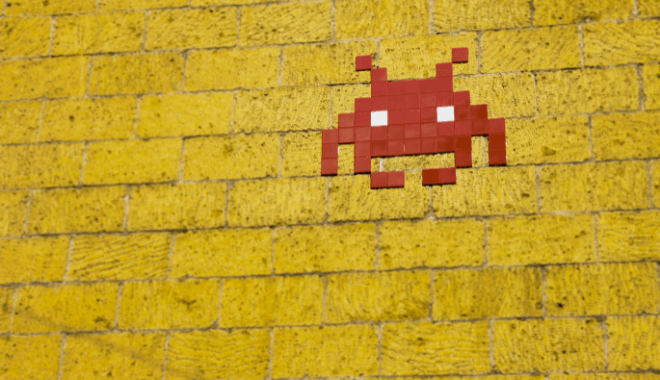

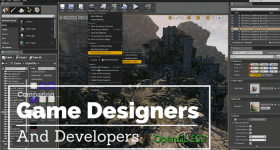


Leave a Reply